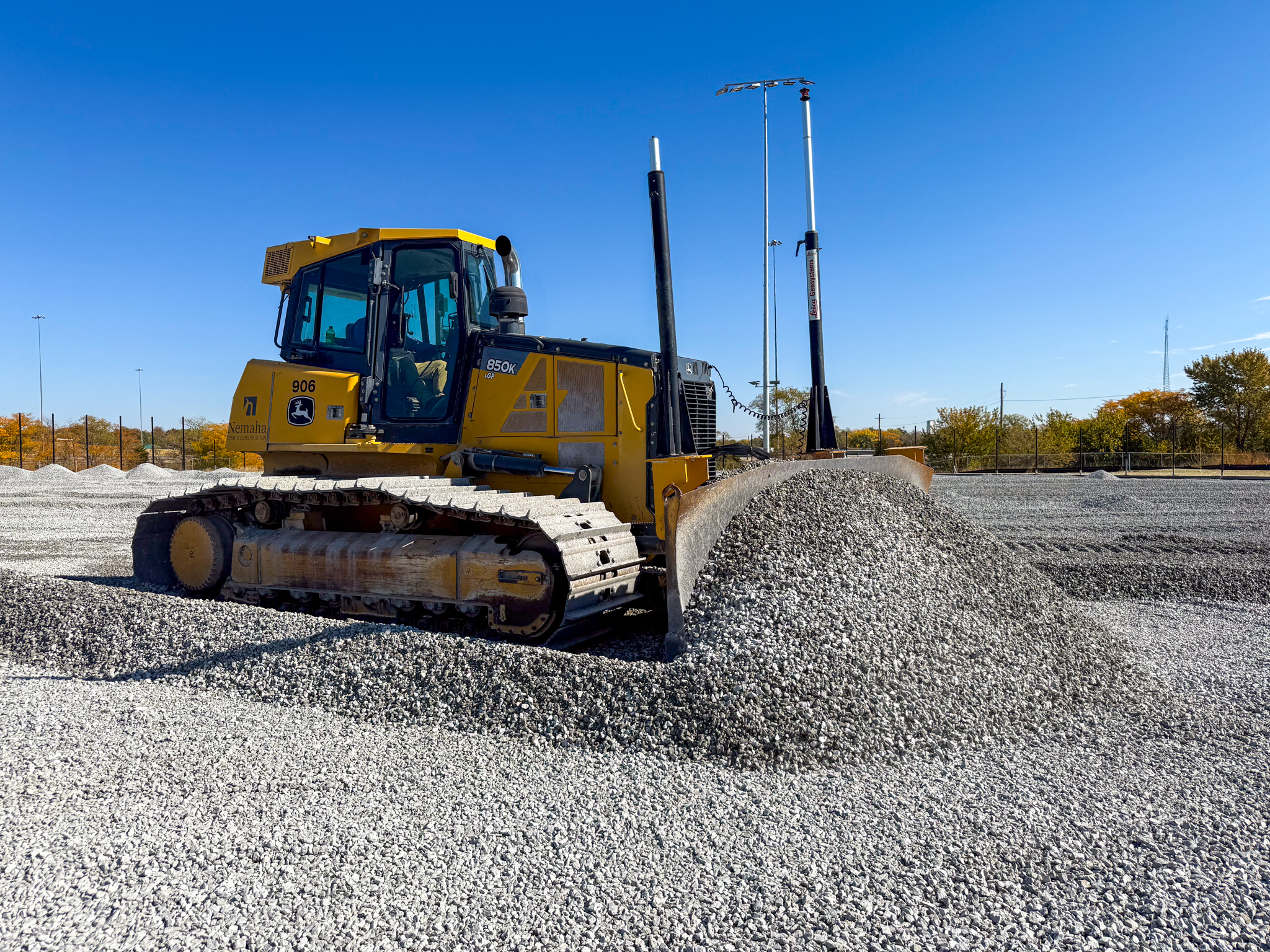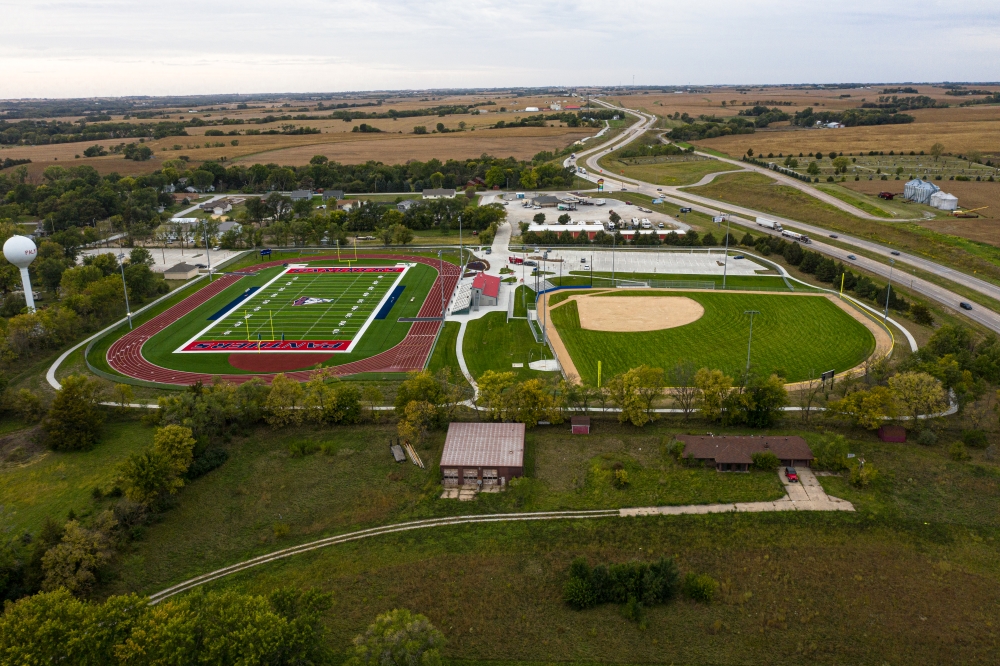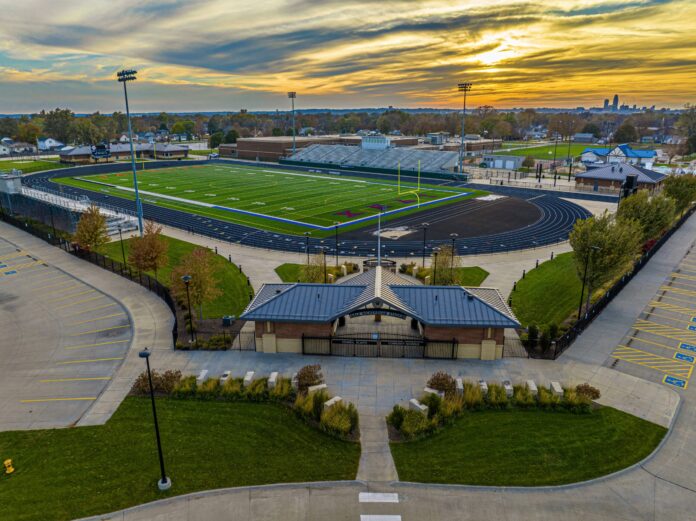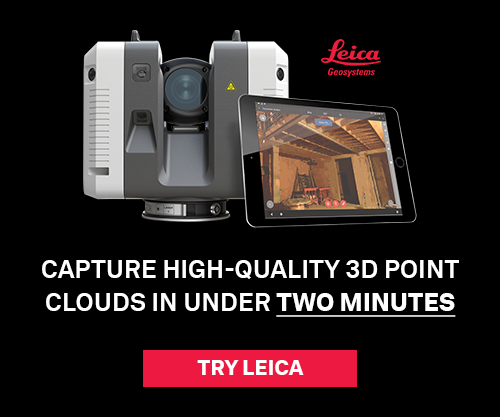AT A GLANCE
- Precision and Cost Efficiency: Nemaha Sports Construction’s use of Leica technology has significantly reduced material costs and improved project accuracy.
- Technology Advancement and Impact: The company’s technology investments have revolutionized their operations, enabling them to complete complex tasks with precision and speed.
- Market Growth and Achievements: Since transitioning to sports and athletic field construction in 2000, Nemaha has expanded its market share by embracing cutting-edge technology and meeting stringent specifications. Last year, the company achieved record success, constructing 34 fields, a stadium, multiple tracks, and courts. The company is one of 500 contractors nationwide certified by the American Sports Builders Association.
The specialized sports and athletic field market represents a $4 billion market in the U.S. One Nebraska contractor has grown their share of this $4 billion market by embracing the latest construction technology to meet exacting specifications while shortening timelines and saving money through innovative approaches.
According to President Jeff Emanual, Nemaha Sports Construction transitioned from landscape construction into sports and athletic field construction in 2000 when the artificial turf industry was taking off in the region. They haven’t looked back and have since expanded their work to full sports facility construction including natural grass and synthetic turf fields, asphalt and post-tension running tracks, tennis and pickleball courts and other improvement such as bleachers, restrooms, concessions, and sports lighting. “Last year was our best year ever,” says Emanual. “Our team built 34 fields, a stadium, 5 tracks, 2 tennis courts, and a pickle ball court.” Nemaha is one of just 500 contractors nationwide to hold certifications in sports construction through the American Sports Builders Association.
The Challenges of Sports and Athletic Field Construction
“Before we implemented Leica GPS technology, being able to get the work done in the available window was the biggest challenge,” says Emanual. Because athletes need to be able to access the field for the next season or event, timelines are typically less than three months.
Tracks and sports fields are built to extremely tight standards not just to ensure a quality project but one that conforms to the governing standards of the sport. These standards ensure the safety of athletes, fairness in competition, and usability of the surface. Accuracy played into the company’s decision to purchase their first Leica robotic total station and 3D machine control software in 2016.
“Subgrades are typically specified at ½ inch on 25 feet,” says Emanual. “Aggregate is a ¼-inch on 25 feet.” The higher the level of competition, the more exacting the standards become. A track Nemaha built at the University of Nebraska at Lincoln is one of just eight running tracks in the country to hold a World Athletics Class 2 Certification. “Our team couldn’t have built a track to these specifications without the Leica machine control technology,” says Scott Johns, superintendent for Nemaha. For example, the 40-meter runway for the pole vault could be no more than seven hundredths of an inch drop from the start to finish and the cross slope needed to be two hundredths of an inch.
Nemaha’s GPS Technology Journey
The first installation of Leica machine control was on the company’s Bobcat compact track loader. Prior to employing the total station and machine control technology from Leica, the company would set up lasers down the straightaways of the track and use a conical laser for the radius in what’s called the “D -section” of the track. With the robotic total station there is only one set-up required, thus saving considerable time.
“The curve is one elevation and the field has another elevation that arcs to the middle,” says Johns. “It was tough to measure from the center of field to that outside curve. Prior to having the technology, we might pull a stringline across, and walk around with a tape measure to make sure that we have our six inches of depth. Now, with the 3D system, we can take a shot of the elevation from anywhere on the project to verify that we’re hitting the tolerances we need or the elevations.”
Nemaha’s reputation for accuracy is bringing value to clients by reducing material costs and improving quality “If we are off by a half inch on a football field, it would mean $12,000-$20,000 in rock,” says Johns. The quality of the subgrade also impacts the life of the playing surface.
According to Emanual, the company recently completed an eight-field, 630,000-square-foot-project with six inches of rock, and 20,000 tons of material placed. Leica technology is the reason why the material used came within 1.99% of what was estimated. “The client was unsure of the perfect number for the subgrade, so we would take our system, shoot the subgrade and find out what the magic number was,” says Johns. “They anticipated going over on rock by a certain percentage, and we kept them well below what they set aside.”

Continued Investment in Leica Technology
Nemaha’s technology journey has been slow and steady. In the year after starting with Leica 3D machine control, Nemaha purchased a second system for a 650 John Deere dozer. “Each year, we bring on more equipment and the robots to go along with them,” says Johns.
For Jeff Emanuel, the biggest challenge was getting over the initial sticker shock and understanding the ROI of the investment. “I was spending thousands of dollars when my competition was not,” says Emanuel. He soon realized how the technology would empower the company to grow by enabling them to take on more projects with increased confidence.

Today, the company operates six total stations including the intelligent Leica TS16 that automatically adjusts to environmental conditions. Their compact track loaders are equipped with grading blades, and in the cab, you will find either the MC1 and/or MCP80 panel for 3D machine control. A dozer equipped with an MC1 or MCP80 panel can also run off a total station.
Their latest purchase is Leica iCON Pave with the 1Up confirguration for a new Power Curber 5700D curb and gutter machine. The patented configuration requires only one total station, one prism and dual GNSS systems for the elevation, slope and steering of the machine. The unique GNSS feature gives a heading without the need for RTK corrections. iCON pave automatically monitors the current position of the machine and the mold against the reference model and sends correction signals to the machine controller with millimeter accuracy.
Johns expects the new technology to trim weeks off their schedule. They would typically set aside two to three weeks for a concrete crew to form and pour the curbs around the tracks. With the new Leica technology and the curb and gutter machine, he expects to complete the inside curb in 4 ½ to 5 hours and the outside curb in 6 or 7 hours.
Technology and People Combine for a Competitive Advantage
“Everyone who uses the Leica system loves it,” says Johns. Operators appreciate the ease-of-use of the interface, speed and accuracy. Emanuel says using the 3D machine control system became contagious among operators. “Some guys had it, but more guys wanted it.”
While technology has been a game changer, Emanual also credits the company’s people for their success. An experienced team and a strong culture empower everyone to be a leader. “It’s expected for everyone to achieve the highest level of accuracy,” says Johns. Thanks to Leica technology, the Nemaha team is getting more accomplished than ever before.
To speak with a heavy construction expert who can guide you on your technology journey, contact us.






